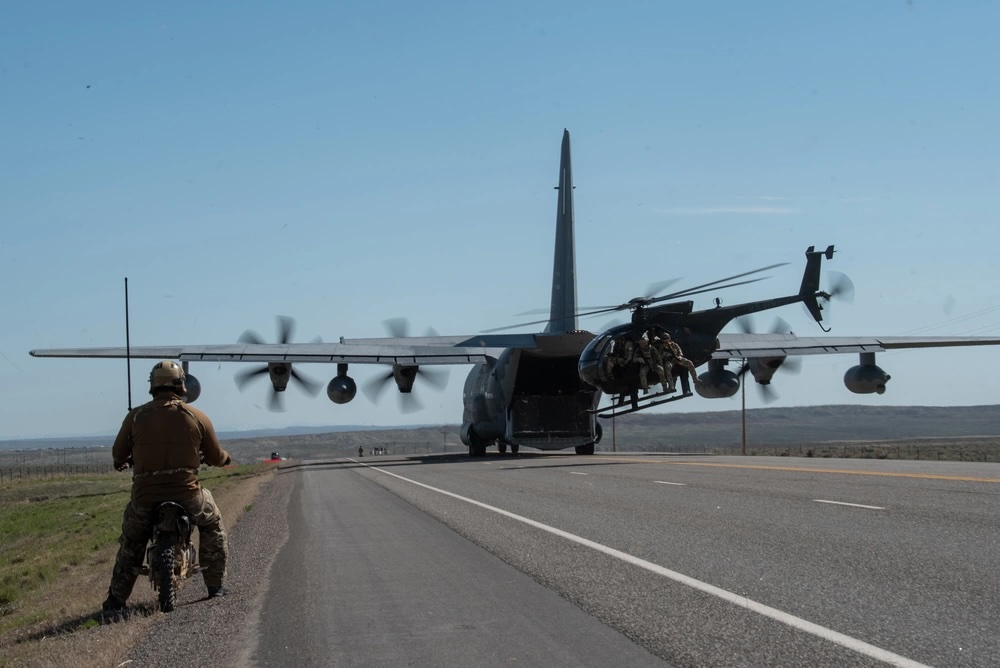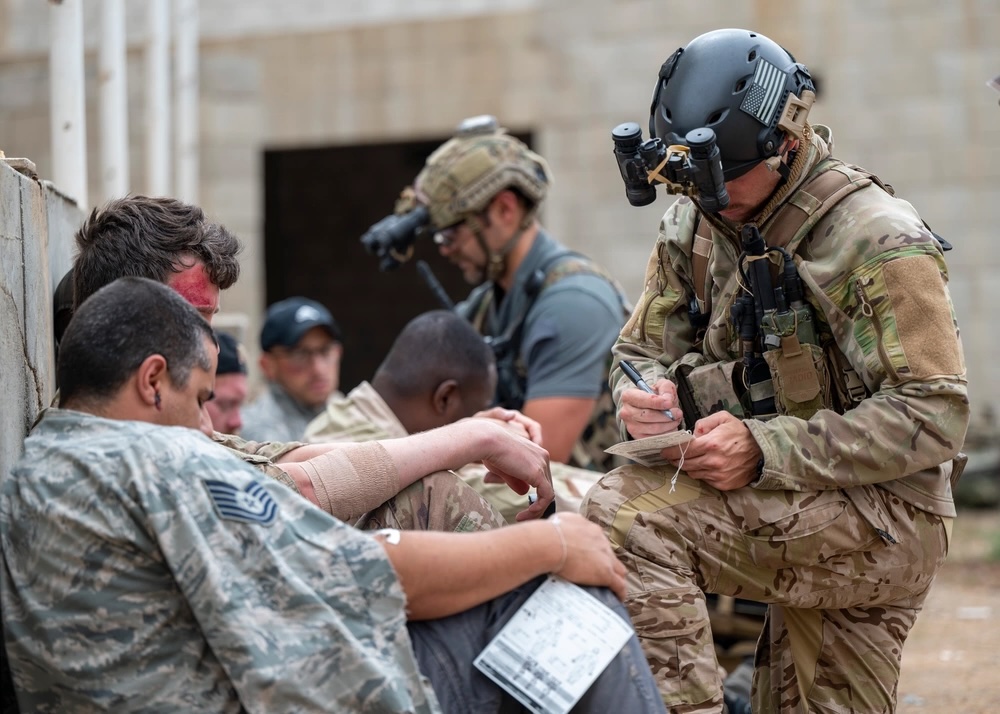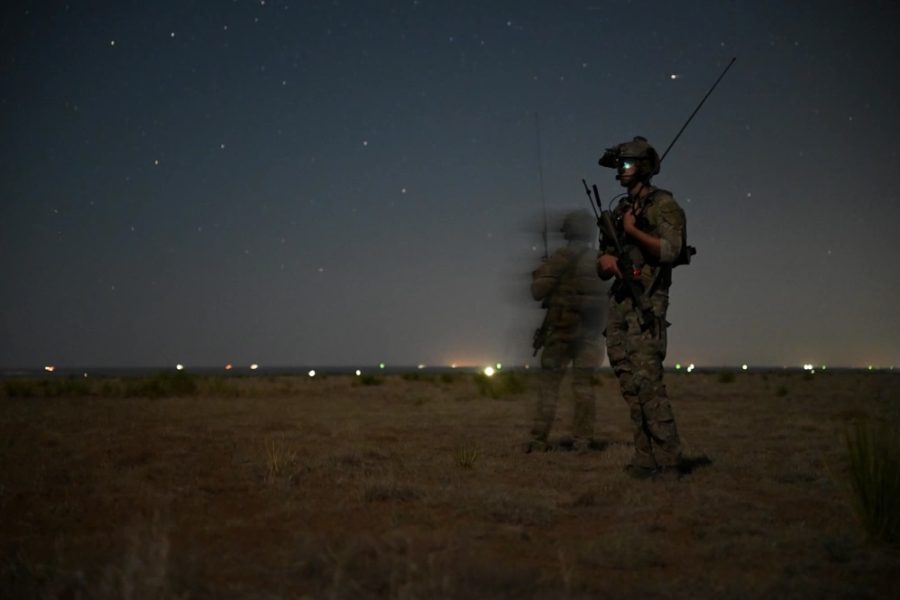Editor’s Note: This is the third in a three-part series about Special Reconnaissance. The first story can be found here and the second can be found here.
Fort Liberty, N.C. — Members of the Air Force’s newest special tactics career field, special reconnaissance (SR) are trained to infiltrate enemy territory and gather information on hostile air defenses. That mission is part of a larger shift as the military prepares for conflicts with near-peer adversaries such as China and Russia.
Older special tactics career fields are also feeling the shift as they focus on skills not often utilized during the past 20 years of the Global War on Terror (GWOT). For example, combat controllers (CCTs) are certified Federal Aviation Administration air traffic controllers who can establish airfields in hostile environments. But during counterterrorism operations, they often served as joint terminal attack controllers, calling in airstrikes to support ground troops.
“For us, GWOT was the JTAC mission,” Capt. Max Krasnov, a special tactics officer and training flight commander with the 352nd Special Warfare Training Squadron at Pope Army Airfield, N.C., told Air & Space Forces Magazine. “We were doing some airfield missions, but I would say 95 percent of what we were doing was JTAC.”
As the Air Force prepares to operate from small islands in the Pacific, CCTs may find themselves helping guide aircraft to austere airfields more often than they did during America’s conflicts in the Middle East.
“Historically, the air mobility mission is one of our bread-and-butters,” he said.

In May, combat controllers with the Kentucky Air National Guard’s 123rd Special Tactics Squadron guided MC-130J transport aircraft, A-10 attack jets, MH-6M helicopters, and MQ-9 drones in for a landing on two highways in Wyoming, an exercise meant to practice generating airpower in austere locations.
“We’re paving the way for what we think ‘forward’ is going to look like,” Master Sgt. Devin Butcher, the lead planner and organizer for the ground force in the exercise, said in a press release at the time. “It’s our responsibility to provide options for the access and placement of all our assets — not just Air Force, but Army, Navy, Marines, everybody.”
A new CCT recruiting ad also emphasized that role with the line “we turn hell into an airstrip … and clear the way for others to follow.”
Meanwhile, the JTAC mission could take a different form in a near-peer conflict, where enemy air defenses may force friendly aircraft to use longer-range munitions dropped farther from the target. In that situation, SR Airmen, who specialize in deep reconnaissance, may serve as remote spotting scopes for CCTs farther away.
“There are a lot of scenarios where the JTAC is back at the base and a team is passing the relevant information of what’s going on,” Krasnov said. “They know the ground truth, but I am trained to process that and explain it to aircraft.”
Pararescue
In GWOT, PJs and other medics often rode helicopters out to injured troops and cared for them on the flight back to a large base with robust medical facilities. But in a near-peer conflict, operators may be much farther from medical facilities, and there may be no flights due to distance and enemy air defenses.
“There was no chance a mission was getting approved if there was not a specific plan that anyone on that mission could get transported to a high level of surgical care within an hour,” said Krasnov of his deployments. “To go from that to ‘we’re probably not going to hear from you for a week’ is a much different mindset and a much different level of risk that you need to plan for.”

PJs are now training to provide care for more patients for longer periods of time than they typically did during GWOT. In a recent exercise off the coast of California, PJs practiced caring for injured patients amid missile strikes, contested airspace, limited supplies, and other challenges meant to simulate what they may face in a war in the Pacific. In one scenario, Airmen treated about two dozen patients after a missile strike on an airfield, then moved them to a contingency location via helicopter.
“This simulates one of the most likely mission sets we could respond to: mass casualties caused by a missile strike at a forward operating site,” Master Sgt. Trevor Runyan, the Instructor Flight Chief at the 68th Rescue Squadron, a formal training unit for PJs, previously told Air & Space Forces Magazine.
Later on, the PJs rescued simulated pilots who had been shot down and landed in the water. Some had drifted into contested airspace, so the PJs jumped out of fixed-wing aircraft with parachute-configured Zodiac boats to pick them up, then bring them back to friendly airspace where a helicopter could carry them to shore. Throughout the exercise, the PJs juggled multiple missions and limited resources.
“As a 10-man element, they must prioritize missions and determine if and when they should operate as a split team, and the risks associated with that,” Runyan said.
While counterterrorism missions continue in the Middle East and Africa, special operations forces across the military are also reassessing their approach to risk in preparation for near-peer conflict.
“For U.S. ground special operations leaders, attitudes toward risk tolerance remain shaped by the last two decades of war in the Middle East and Africa,” special operations expert Spencer Reed wrote in January for War on the Rocks. “But if these leaders are to offer utility to the joint force or their parent services in the future fight, they should reframe and reassess how they view risk now, ahead of a future armed conflict with a great power adversary.”
